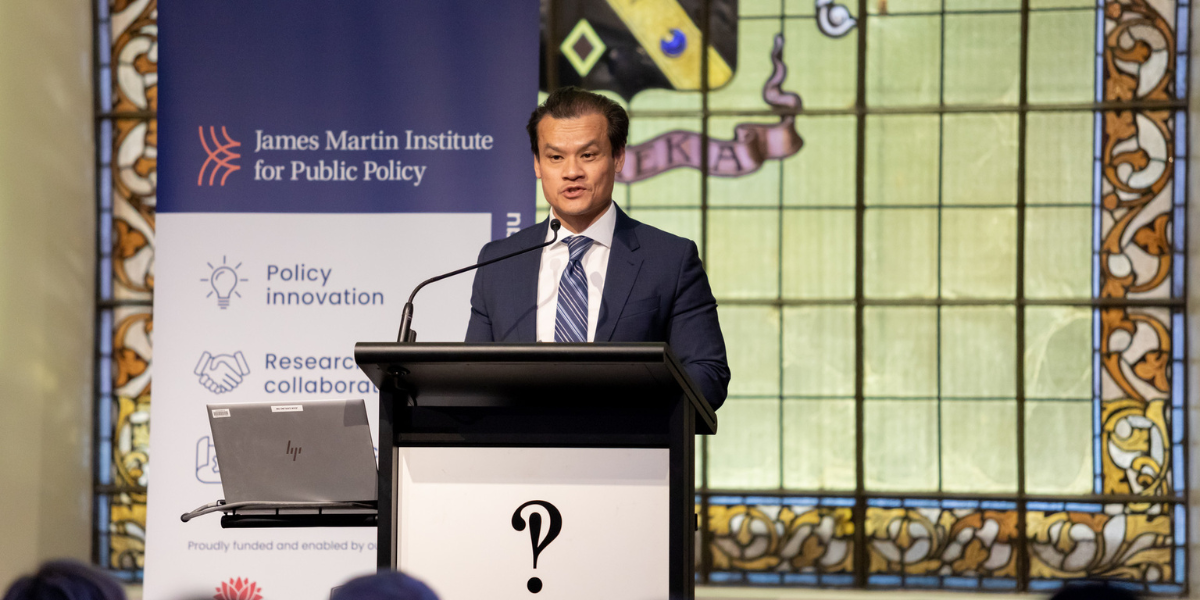We should reimagine how capital markets can better back women entrepreneurs, especially those at society’s margins, and boost women’s economic security more broadly. The design of a new venture capital fund announced by the New South Wales Government can demonstrate what’s possible.
Last month’s NSW state budget was packed full of reforms and investments in the future. The Treasurer, Matt Kean, had promised to put women’s economic participation at the centre. According to the chair of the Expert Reference Panel of the NSW Women’s Economic Opportunities Review, Sam Mostyn, he delivered in a big way. But can greater access to better capital push things even further?
As part of its wider effort to empower women economically, the government will introduce measures to support women entrepreneurs and women-led small businesses. Most notably, it will create a venture capital (VC) fund for women-led start-ups, named in honour of the late, great fashion leader Carla Zampatti.
We know that women entrepreneurs are less likely than their male counterparts to receive VC funding to grow their businesses. Over the past few years, solely female-founded Australian companies raised significantly less per funding round compared to all-male founding teams, according to research by Techboard. Evidence from overseas suggests women founders are asked different questions by potential investors. Since networks are crucial in this domain, and only a fraction of Australia’s VC firms are led by women, it’s not hard to see why there’s a gender investment gap.
There’s a need to debias VC activity and fill the missing finance this bias creates. The Zampatti fund can help on both counts. But more is needed to truly close the gender gap in financing businesses, especially for women who experience compounding forms of disadvantage. Too many women lack access to the high-quality, “patient” capital they need to sustainably innovate and scale up their business. We have to reimagine how capital markets can better back women entrepreneurs, especially those from the economic or social margins, and boost women’s economic security more broadly.
Feeding into the government’s review, the James Martin Institute for Public Policy developed an idea for a government-backed impact investment fund to support women from disadvantaged backgrounds, such as refugees or those in rural communities, to grow their small businesses.
This idea aligns with the Expert Reference Panel’s suggestion for the NSW Government to provide “direct social impact investment to women-owned and led businesses, start-ups and enterprises”.
The impact fund would crowd in private capital, including from banks that recognise the opportunity to connect with future business clients, and support women denied capital due to factors such as a lack of credit history or weak social ties with potential investors.
Something like it could be part of the Zampatti fund.
Regardless, there are at least three innovations that would help ensure that the design of the government’s new venture capital fund expands women’s economic security and prosperity in an inclusive way.
First, make finance adaptive to women’s lives. No one’s life is linear or simple – finance should recognise this. The new fund should factor in the multifaceted demands on women’s lives and how this affects business operations. The most obvious example is care responsibilities. Beyond merely tolerating these considerations, the fund should proactively encompass financing for childcare or other supports to allow parents to balance commercial and caring duties.
Second, build the relational infrastructure to reach disadvantaged women. Entrepreneurs trying to build businesses are located everywhere, from the suburbs of Western Sydney to rural centres and farms. But the kind of support and capital they need isn’t typically designed to actually find or empower them. Investors at the new Zampatti fund should spread out across the state, well beyond affluent parts of Sydney, and deploy human-centric design to actively engage potential investees. They should link into community organisations, local business associations, incubators supporting refugee entrepreneurs, and others who can identify dynamic but less connected women entrepreneurs, and then make every effort to engage with them in their own places, languages, and circumstances.
Finally, prioritise investments that create good jobs. Small and new businesses are the engine room of jobs growth in Australia. The new fund should back businesses that not only create jobs, but will sustain good ones, especially for women. This would propel women’s economic security more widely. While there’s no universal definition, we might think of good jobs as those that are well-paying, respectful, safe, secure, flexible, career-advancing, and purposeful. Far from being a feel-good category, such criteria can be rigorously integrated into investment strategies. The US investment firm Two Sigma Impact, for example, deploys a data-driven, scientific approach to identifying companies worthy of investment based on their commitment to good jobs because of how this tracks long-term value creation.
These three design innovations will help the Zampatti fund to reach and benefit more women, from diverse backgrounds, and respond to the real social and economic barriers they face. Making the economy more equal for women, it turns out, requires us to remake finance too.
Dr Vafa Ghazavi is Executive Director for Research and Policy at the James Martin Institute for Public Policy.
Image credit: Julieanne Birch / iStock










